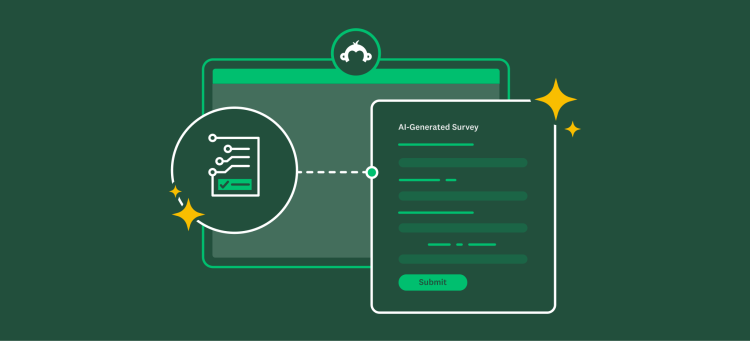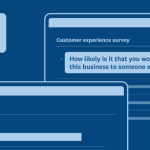Freeze!
Before delivering the questionnaire, give it one last look. Remember, the experience for your respondents, the quality of their feedback, and the reputation of your company are all on the line.
To prevent a crucial mistake from slipping through the cracks, consider the following items before launching your survey:
1. Make your survey easier to take
Respondents face daily commitments that demand their time and attention—and your survey isn’t one of them. To make their experience in taking it easier and more enjoyable, take some time to cut out the fluff. You’ll also benefit as a shorter survey improves the quality and quantity of responses that come in.
Here are some actionable tips to shorten each component of your survey:
Number of questions asked- Unfortunately, we can’t offer a recommendation as simple as: “Ask 8-10 questions to optimize your survey’s response rate.” Each survey is different, whether it's the audience you’re sending it to, the respondent’s relationship with the survey’s subject, or the level of time and effort required to answer each question.
Instead, review each question’s value. Does the question overlap with others? Is it aligned with the overall theme of your survey? And does it has the potential to elicit critical feedback? If the answer is no to any one of these questions, it may be worth removing.
Question types- There are certain question formats that simply demand more time from your respondents. Free response and matrix questions
for example, are relatively
time consuming when compared to multiple choice questions.
With this in mind, confirm that your survey is primarily using question types that are in multiple choice, star-rating, checkbox, slider, or dropdown formats. The few open-ended, ranking, and matrix question types that your team has prioritized to use can be left to the end.
Answer choices- There’s a balance between including enough relevant answer choices and using an excessive amount of options. In general, our team of survey methodologists recommend including less over more
choices, and using an “Other (please specify)” option to account for respondents who don’t find the choices you’ve included to be relevant.
An “I don’t know” choice can also be used, but with greater caution as it can lead to respondents engaging in satisficing.
2. Check your flow of questions
Skip logic—determining the question or page a respondent sees next based on how they answer the current question—allows you to personalize the questionnaire among groups of respondents, resulting in an improved survey taking experience and a higher completion rate. From a data quality perspective, it allows for more specific and insightful responses while removing potential biases.
Skip logic can, however, be costly if it isn’t used appropriately or if it’s forgone at opportune times.
Using it ineffectively results in asking respondents irrelevant and confusing questions. For example, let’s say your survey asks the following question:
“Do you play video games?”
If the respondent says they don’t but your skip logic takes them to a question that asks, “which video games do you enjoy most?” the respondent would become frustrated and either leave the survey or—even worse—answer untruthfully.
On the other end of the spectrum, not using skip logic at all results in missed opportunities for following-up. If a respondent doesn’t play video games, ask them why that is and what it would take to convince them to play—the responses might surprise you.
To use skip logic effectively, identify your broader questions. For each answer choice within those questions, ask yourself: “Which follow-up questions make sense?” This process warrants a double and even triple check.
3. Get feedback from the genius
Are you having trouble finding somebody to review your survey? Would it be helpful to receive guidance from a survey guru?
Well how about a genius? With a click of a button, you can now receive customized feedback using our new feature, “SurveyMonkey Genius.”
In addition to providing actionable feedback, SurveyMonkey Genius estimates the time it takes to fill out your survey and its completion rate—giving you an idea of both the quantity of responses that will come in and the respondents’ experience from taking it.
Now that you’ve read this, take another look at your questionnaire. Can you can spot any text that’s worth removing? Where can you use skip logic more effectively? And what’s SurveyMonkey Genius telling you?



